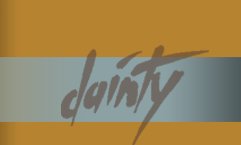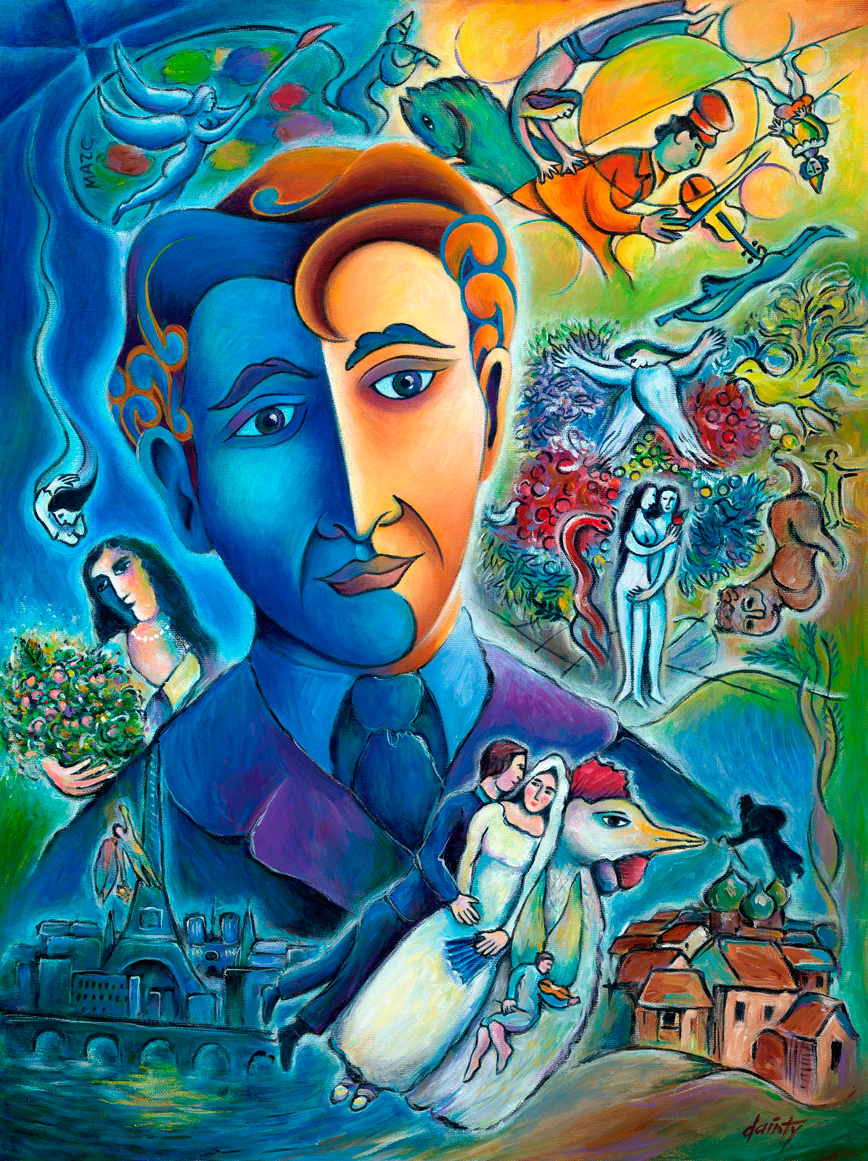
The Art of
Jackson Dainty
![]()
![]()
![]()
![]()
![]()
![]()
![]()


Marc Chagall
Fine art Giclee print Inquire about originals
18"x24"
In the upper left corner is the artist's palette which is heavenly inspired with an angelic figure holding a brush. Below the palette on the left is the ghost of Bella from the painting The Soul of the City (1945). On Chagall's shoulder is his beautiful living Bella. She was much the subject of his art.
Above Chagall in the upper right corner is an example of his style of metamorphosis. A horse turns into a fiddler or is half horse, half fiddler in a circus scene, complete with a flying acrobat and a tipsy tightrope walker.
Below the circus is a portion of a painting named Paradise (1962). It is Adam and Eve in Eden, a place above time and space.
At the bottom of the painting is the unique image of a bride and groom riding a giant rooster. This scene is a partial version of Chagall's painting The Lovers of the Eiffel Tower (1938-1939). It is a joyous image of Bella's and Marc's wedding. On the lower left of the scene is Paris with a flying angel near the famous Eiffel Tower.
The lower right is the Russian city of Vitebsk, Chagall's birthplace. Above the town's buildings is the image of the Wandering Jew, a symbol from the Diaspora Over Vitebsk (1915-1920).
Finally my representation of a youthful Marc Chagall. His blue side represents the mystical part of him, the deeper side of himself as an important aspect of his life and art. The lighter side displays the lightness of his being, which certainly shines through most of what he expressed.
So many beautiful flying figures from one master of change. You really must wonder if we also fly in our own art of dreams!
Why a Master
Don't let that horse eat that violin
Cried Chagall's mother
But he kept right on painting
And became famous
And kept on painting
The Horse With Violin in Mouth
And when he finally finished it
He jumped up on the horse and rode away
Waving the violin
And then with a low bow
Gave it to the first naked nude he ran across
And there were no strings attached.
by Lawrence Ferlinghetti from: A Coney Island of the Mind copyright 1958
...But he kept right on painting... Chagall had no choice and he knew it. His world was phantasmagoric and mundane, whimsical and severe, dark and light. It is there for all to see. To really appreciate a Chagall is to let go of all perception of the so-called real world. You accept flight as fact and color as emotion. The Wandering Jew meets the cosmic circus and the results are breathtaking.










